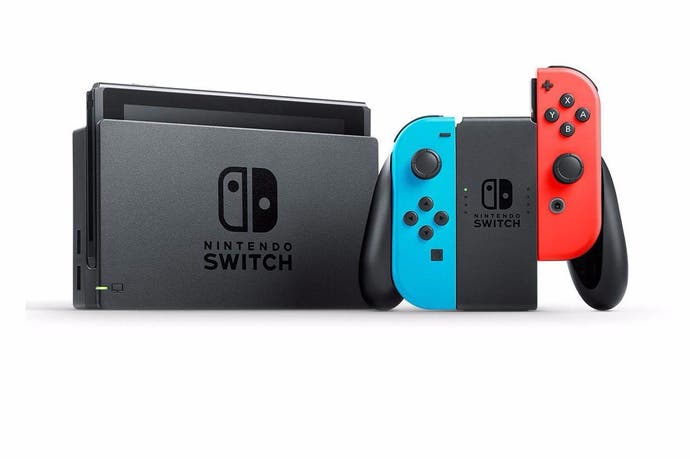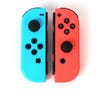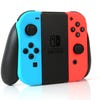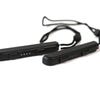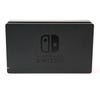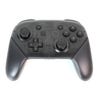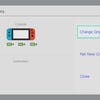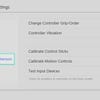Nintendo Switch review
Digital Foundry presents its complete technical breakdown of the new console.
Nintendo Switch is the most powerful dedicated gaming handheld ever made, but the challenges facing it are considerable. It's a hybrid device battling on three fronts: firstly, as a successor to the ill-fated Wii U. Secondly, as a pricier, high-tech sibling to the portable 3DS. And finally, as Nintendo's first, perhaps understated attempt at a stand-alone tablet. It's an ambitious concept, but can it hit the mark in all three area?
The Switch's main party trick is its ability to transform from a home console to a fully portable handheld. At the heart of this is a smart and adaptable tablet - in every way a leap in quality over its immediate predecessor, the Wii U and its satellite GamePad. The fundamental change is that all graphics processing is handled natively on this unit, whether docked under your TV, or out in the wild. The fact that Switch is a self-contained handheld makes it feel more like a successor to the 3DS in this respect. And despite all the technology packed into it, it still feels comfortable in the hand, weighing just 297g in tablet mode - 40g less than a 3DS XL. That rises to 400g with controllers attached, but still, it never feels fatiguing for long play sessions.
Physically, every part of the Switch tablet is a step up from the Wii U spec. The screen size stays at 6.2 inches, but moves from the GamePad's 480p TN panel to a higher quality 720p IPS panel - now with a 10-point capacitive touch-screen. Crucially, the bezel is much narrower, barely a centimeter in all directions, and the device is just over centimeter in depth. It's sleeker all round, and simply more effective as a portable device than the Wii U's cumbersome tablet. Nintendo's move from a scratch-prone glossy material to a silky matte plastic on Switch is also a very welcome touch.
Looking at its edges, we have a recessed power button at top-left, a volume rocker, and a long air vent at its centre that reveals a small fin array inside. You also get a 3.5mm headphone jack, and finally a tiny slot for game carts at the far end. At the bottom is a single USB-C port. This is key: an all-in-one input that you can use for charging, but also serves as the primary interface with the bundled dock. One curious omission here is some sort of LED array - at least some indicator of power status and WiFi activity would have been useful, similar to what we have on 3DS.
- Buy Nintendo Switch from Amazon with free shipping.
Last but not least, there's a microSD card slot sneakily hidden underneath the kickstand. That supports up to the UH Speed Class 1 cards for up to 104MB/s throughput. However, the kickstand itself is an area that disappoints; the hinge has more flex to it than you'd expect. It doesn't instill confidence when snapping it out fully, and it's a far cry from the firmness of the Microsoft Surface stand, for example. It's certainly functional in that it does prop the console up, but the build quality here is at odds with the rest of the device. It does the job, but feels flimsy and insubstantial: an accidental brush against the unit, or a light tap, is enough to cause the machine to tip over.
As for the specs, much has been said of the move to Nvidia's Tegra technology here. There's strong evidence it uses an updated Maxwell-based Tegra X1 chip and while this chipset might be relatively old based on the breakneck pace of mobile technology, its performance is still excellent - and paired with a low-level API, we can finally see what this silicon is capable of. As a home console, it's a big departure from the IBM PowerPC architecture Nintendo used from the GameCube up until the Wii U. It's a fresh start, but an exciting one. And crucially, this technical break in favour of a power-efficient mobile chipset gives Nintendo the ability to condense everything it needs into one small device. Home console and mobile are now one, with the full force of Nintendo's creators focused on one platform.
Switch's display: a perfect match for its technology
In practice, how do games hold up on the Switch's 6.2-inch screen? Initial impressions are glowing, and you can expect the best quality LCD panel Nintendo has produced in a handheld so far. The display oozes quality, giving a vibrant, clear image that fits the console's high launch price. Contrast levels are excellent out of the box - a league away from the dull, low contrast TN panel used on the Wii U. Colour accuracy also carries its content well, featuring only a very slight blue push when compared with a calibrated MacBook Pro panel.
For a Nintendo handheld, this sets a new high watermark. Even in motion, pixel response times are surprisingly strong, and certainly better than the 3DS XL. Simply put, there's no obvious trace of ghosting on grey-to-grey transitions. For dull colours on the lowest brightness setting, smearing and trails behind objects are imperceptible.
The pros and cons of IPS technology are still in line with recent iPhone models or the Vita slim. Black levels are decent in brightly lit rooms, but certainly pale in comparison to OLED devices when viewed in the dark. There's also an obvious gamma and colour shift when tilting the device around, washing the screen out when moving up and down especially. Viewing from side angles isn't as big a problem here, which is a relief for multiplayer sessions on the go.
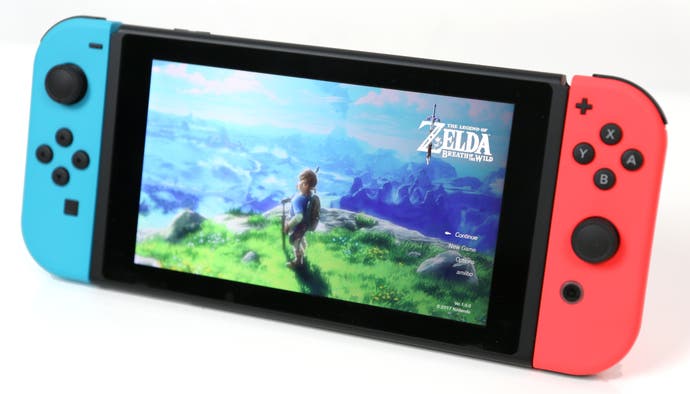
For outdoors use, the Switch is again very usable. For reference, the screen hits a higher brightness level than either the 3DS XL or Wii U GamePad on their peak settings, but falls short of the latest cutting-edge smartphone displays. There is a glossy finish on the panel too, meaning you're going to be angling it at times to get a view without glare. But as a general turnout, it's very comfortable overall, and the Switch ramps its brightness up high enough to use effectively in broad daylight - though there are battery life consequences as a result, as we shall discover.
The decision to give Switch a 1280x720 panel is also on-point for a handheld, balancing nicely with the capability of its internals. Of course, the smartphone space is moving to audacious numbers here - Sony has just announced a 4K HDR panel in its latest device - but in practical terms for a gaming handheld, 720p is a comfortable rendering target, and there are enough pixels per inch on-screen to deliver a sharp, clean image. It also means Switch's Tegra X1 GPU should comfortably hit native 720p in major games, limiting the need to upscale from lower resolutions with all the visual artefacts that entails.
The dock, Joy-Cons and accessories
Switch is Nintendo's most sophisticated handheld to date, but for better or worse, the tablet on its own looks much like any other smart device on the market. Thankfully, the Joy-Cons give the Switch some much-needed character. Using the rails at either side of the tablet, these slide down smoothly to a satisfying, echoing click. The metal rail attachment is robust, with five screws fixing the bracket to the tablet's edges. It's a reassuringly sturdy connection once clicked in, and only unlocked by two small buttons at the back.
Really, the two Joy-Cons are the stars of the show: wireless, motion controlled, with a tight vibration for feedback, built-in shoulder buttons, and even an IR remote on the right-hand controller. The 525mAh battery in each has a long lifespan too, rated by Nintendo at around 20 hours apiece, and they're recharged directly from the Switch tablet. One criticism is they can be a little cramped when held sideways for makeshift two-player sessions, with tiny buttons that match the 3DS's - but you soon get used to it. And at last on a gaming handheld, we have proper, raised, clickable thumbsticks this time.
The only downsides? We can't overlook that neither offers a real d-pad. For the sake of symmetry, each Joy-Con instead uses individual direction buttons that we can see being an issue for fighting games. There's also controversy surrounding the Joy-Cons' wireless stability - something we've analysed in-depth elsewhere.
Overall, the Joy-Cons are at their most comfortable when plugged into the tablet, or connected to the individual grips included in the box. But also supplied is a unified controller grip, combining both Joy-Cons into one wireless pad. This sounds ideal on paper, but the results may not be to all tastes. We found it functional enough, but uncomfortable for long play sessions. The controller grip doesn't give quite enough space for your fingers at the back, leaving your hands in an odd, clawed position.
For a full-fledged, traditional gaming controller, the Switch's Pro pad really is the way to go. Sadly, it is another expensive Switch accessory, but you do get a proper d-pad this time and a larger battery rated for 40 hours while the analogue sticks are larger and more accurate. In terms of comfort levels, it's a huge improvement over the supplied grip. In short, this is the real deal. If you're planning on using the Switch as a docked home console, and if you can take the price, the Pro controller comes highly recommended, especially for fighting games where the d-pad really shines.
The last part of the package is the Switch dock, an innocuous, hard plastic block, that interfaces with the USB-C port at the bottom of the tablet. Nothing is included in the dock in terms of processing power here; it simply gives the tablet access to more power to in order to tap into higher clocks on the Switch's GPU and memory. Docking also gives you access to three USB ports, and of course, a HDMI output to send the image to your TV. All the wiring is hidden at the back, meaning it's quick and easy to just guide the tablet down, and go from there. But as a side note, you must use the dock to connect the Switch to a TV. A standard USB-C to HDMI converter or cable won't do anything - and yes, we tried it.
One criticism here is the lock-in procedure. There are two metal pins at the bottom to help guide the tablet's USB-C down the middle. It feels slightly inelegant, and there's a lack of insulation between the screen and the dock as you slide it down. All you have are two strips of hard plastic that run against the screen, with a small patch of felt nearer the bottom. Scratches haven't appeared on our unit so far, but for such an expensive device, more padding would have been reassuring.
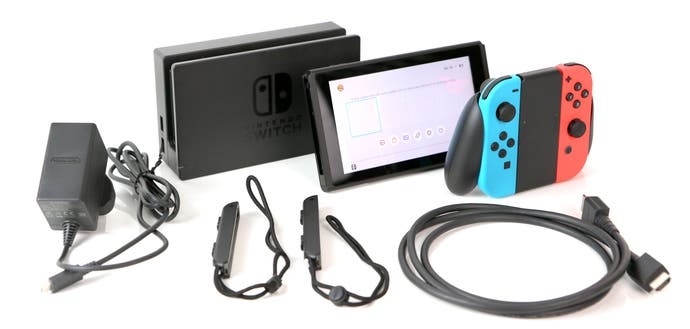
System options and the UI
Booting the Switch to its main menu, it's clear that this is Nintendo's most straightforward system UI to date. The grid layout is gone - at least for launch - and instead you get a long row of tiles that you swipe along with your finger. It's low on clutter, with dedicated buttons for News, eShop, Album, Controller options, general settings, and power at the bottom. And it's here that you realise you can take screenshots at any time, with a tap of the square button on the left Joy-Con, which sends a JPEG straight to the album.
This flags a surprising design choice from Nintendo. The Switch outputs at a maximum of 1080p, with options for 720p and 480p in there too. However, even while docked to a TV, the UI still renders at 720p. When connected to a screen, all the graphics, text, and even the Mii Maker app upscale from 720p to whatever resolution you have set as your output. That's really quite a shame. For the sake of keeping things simple, Switch's front-end seems to keep the native 720p layout used in portable mode, all of which means a less clear image on 1080p or 4K sets. In fact, 4K users will go through two sets of resizing - an internal upscale to 1080p, then the display's bump to ultra HD.
Delving into the settings, there are a few useful extras here. For those who need it, Switch does support USB to LAN adapters out of the box, giving a wired internet connection while docked, while standard WiFi works just fine, of course. You have Amiibo support too, with NFC connectivity built into the right Joy-Con, just by holding your Amiibo over the analogue stick - plus support for the Bluetooth 4.1 standard. And of course there's now a more fleshed out Mii creation tool on Switch, which for those interested, adds more colour options for hair and accessories.
Beyond that, it's all about what you install to it. With 32GB of pre-installed flash NAND memory, out of which only 25.9GB is usable, you will need to ration your space carefully with digital purchases. For small indie games this shouldn't be an issue, but it's easy to see major releases chewing through this quickly. For example, digital games confirmed so far include Puyo Puyo Tetris at only 1GB. More trying is the 7GB requirement for games Mario Kart 8 Deluxe, and up to 32GB for Dragon Quest Heroes 1 and 2. That far exceeds the Switch's default space, and unfortunately external USB HDDs aren't supported with the console, even while docked.
Micro SD cards are the best workaround, and another must for using the Switch long-term. With a day one patch installed, support is there for SDHX cards, in theory letting us hit 2TB down the line. Unfortunately, the eShop wasn't live during the review period, so there aren't any digital copies to test loading speeds yet, but we'll report back on that when we can. However, in terms of pure capacity, the options are clear: 64GB, 32GB and 128GB cards are reasonably cheap, but beyond that, we're looking at silly money compared to conventional hard drives. It's another expense to factor in to avoid cartridges, but the lower capacity SDs aren't wildly expensive, and keep options open for digital-only users.
Thermals, noise and power
Power consumption, noise and thermals are all interlinked parts in the balancing of gaming hardware performance. The Switch packs in plenty of horsepower, with four ARM Cortex A57 cores, and 256 of Nvidia's finest CUDA cores. However, as we've recently reported, clock speeds are adjusted based on whether the console is docked or in portable mode.
To start, the CPU always stays fixed at a speed of 1020MHz regardless of mode. That's a bedrock, making sure game logic always runs in the same manner, whether you're docked or gaming on the go. However, the GPU clocks adapt, with Switch running at 768MHz while docked, but much lower while on the go. Based on our discussions with developers, in portable mode game-makers have a choice to either run the Switch's GPU at 384MHz, or slightly lower at 307.2MHz, in the interest of saving on battery. The same goes for RAM speeds, where memory frequencies are lowered in portable mode, from the docked 1600MHz to 1331MHz.
The good news? Regardless of mode, the Switch doesn't ramp up fan noise to distracting levels, even in top-end 3D games with the volume muted. Put your ear near to the air vent in portable mode, and it's possible to hear its fan ramp up in velocity around five minutes into a game. But it's subtle, unobtrusive, and only channels a gentle flow of air outwards. From a typical playing distance this is trivial, and at room temperature, evidence suggests there's no problem with Nintendo's management of heat or acoustics in the Switch tablet.

We put this to the test with a thermal camera. The hottest point is expectedly at the air vent at up top, where leaving the Switch idling at the menu puts it at 30 degrees Celsius, whether docked or undocked. That creeps up during intensive 3D games in docked, and after 20 minutes that same spot goes to 52 degrees maximum. Meanwhile, in portable mode the power throughput is reduced massively, meaning we see thermals peak at 10 degrees lower - 42 degrees Celsius. All in all, it's a comfortable level of heat in the hand - the Joy-Cons are separate from the main unit, after all - at worst giving you a lukewarm touch during play.
Battery life is a more pressing issue. For perspective, while docked the Switch demands 7.5 watts on the main menu, and 16 watts at peak during games. But even with its reduced GPU clocks in portable mode, keeping a lid on power consumption poses a challenge, and a built-in 4310mAh battery has to service it for at least 2.5 hours to meet Nintendo's claims. We used a watt meter to find an area of Switch gameplay that pushes docked power consumption to the limit, then decoupled the unit to run in mobile mode to judge consumption.
The result? Expect just over three hours of use with while playing intensive titles, on either low or 50 per cent brightness, with volume set halfway, and WiFi enabled. Incidentally, this is the same time it takes for the console to perform a full recharge. It's not an impressive number, and at maximum brightness it gets worse still, at two hours and 37 minutes. In fairness, this is one of the most demanding Switch games available. Nintendo claims battery life can stretch to six hours given less taxing software, but it sets the bar for what to expect in major 3D games.
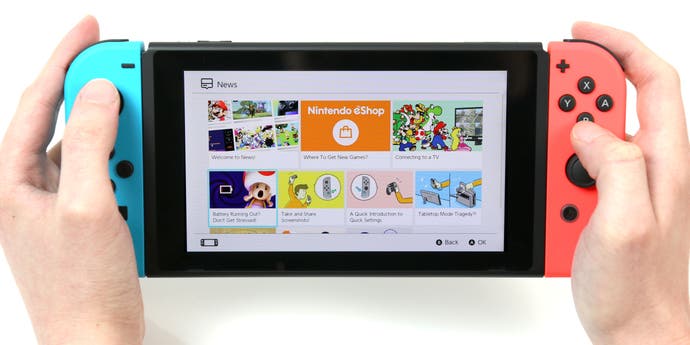
| Switch Battery Life | Time |
|---|---|
| 0% Brightness, 50% Volume | Three Hours, Five Minutes |
| 50% Brightness, 50% Volume | Three Hours, Three Minutes |
| 100% Brightness, 100% Volume | Two Hours, Thirty Seven Minutes |
| 100% Brightness, 100% Volume (Powerbank Connected) | Six Hours, Fifty Minutes |
| Full Recharge | Three Hours, Five Minutes |
To solve this, we have the option of plugging external powerbanks into the Switch's USB-C port, giving it extra juice on the go. These are the same as you'd use for a regular mobile phone, so we bought a GMYLE-branded battery from Amazon for just £15. It's rated at 10,000mAh, so even factoring in inefficiency in power transfer, we should get around six to seven hours of battery life. The reality fell far short.
On the positive side, plugging a powerbank into the Switch causes the console to recharge faster than it depletes its own battery even in a stress test scenario with brightness and volume maxed. It's a good start, and means the console power gauge holds at 100 per cent for as long as the powerbank lasts. However, it takes only four hours and 13 minutes to wear through the external battery, before Switch defers to its own solution. In total that combines to six hours and 50 minutes, a decent overall time, but for the extra weight and wiring involved we'd hoped for much more. Of course, results may vary based on brand and quality, and so the search is now on to find a power bank that will indeed deliver battery life from the Switch in line with the rated capacity.
Nintendo Switch: the Digital Foundry verdict
In many ways, Nintendo Switch is what the Wii U should have been, and even reprises some of the best games in its catalogue. It's a better built machine, sporting higher grade materials, an innovative Joy-Con controller setup, and a gorgeous screen. The company's strength in handheld design is clearly tapped into, and while it may be pushed as a home console first, it's more appetising to see it as the successor to the 3DS. Switch rightly takes the crown as the most powerful dedicated gaming handheld right now, but the bonus is its effective, and seamless home console mode.
Certain limitations are clear though. As a hybrid console it has drawbacks on both sides of the package. In a portable state, the battery struggles to hold for over three hours in taxing titles, something even a sizable 4310mAh battery can't avoid. Meanwhile, for the docked, home console experience, the known technical specifications do fall short of competition from PS4 and Xbox One. Don't expect top-of-the-line third party games to reach Switch, and if they do, expect a degree of compromise in visual quality or performance.
There's no denying this is still a compelling piece of technology. Putting aside the controller sync issues and an unconvincing stand, there's a lot to celebrate. The Joy-Cons adapt brilliantly to any situation, and the tablet is ruggedly built in most other regards, with a smart finish, delivering games at a quality beyond anything we've seen on a handheld. It's a cliché, but the value of any hardware rests on great software, and it's Nintendo that will be the one to watch going forward. As the years roll on, we can fully expect the Switch's potential will be better tapped into, and fine-tuned to impressive results
However, as a launch product, the £280/$300 price-point is a big ask compared to the competition, especially bearing in mind a launch title line-up based primarily on Wii U ports. There are also many extra costs too - a larger SD card is essential, the Pro controller is recommended for home use, and an external powerbank is worthwhile on the go. For now, what we have is a strong foundation to build on; it's pricy and not without fault, but we can't wait to see where Nintendo take the concept.
